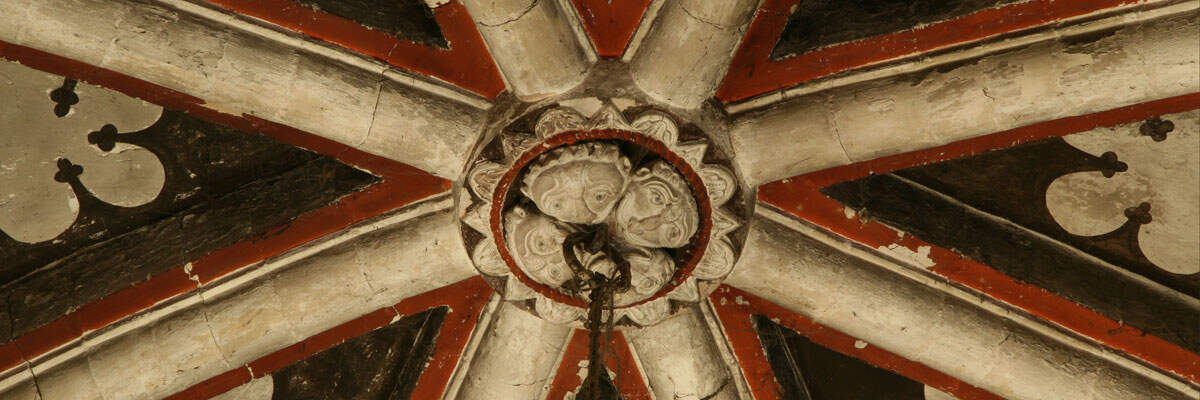Architecturally, Ickleton is one of the most important Romanesque
churches in the county. It was originally a cruciform church of c.1100 with
aisleless chancel, aisled four-bay nave with clerestory, transepts and a central tower. The S
aisle was widened (14thc.) to the width of the transept, and a chapel added to
the N side of the chancel (15thc.), which was later
removed although its entrance arch remains. The N transept has since been
shortened to the width of the aisle. The original nave clerestory was very low,
with windows above the apex of each arch. When the
aisle roofs were raised, new windows were added at a higher level, but five
rather than four, so that the clerestory is out of phase with the
arcade. The chancel was rebuilt
in the later Middle Ages, and again in 1882. The upper storey of the tower is
14-15thc., and it has a lead broach spire and a Sanctus bell. The church is
constructed of flint and Sarsen pebbles. Restoration work following a
deliberate fire in 1979 resulted in the discovery of a celebrated cycle of wall
paintings from the 2nd half of the 12thc. decorates the N wall of the nave.
Sculpture described here comprises the nave arcades, W
crossing arch and W doorway.



